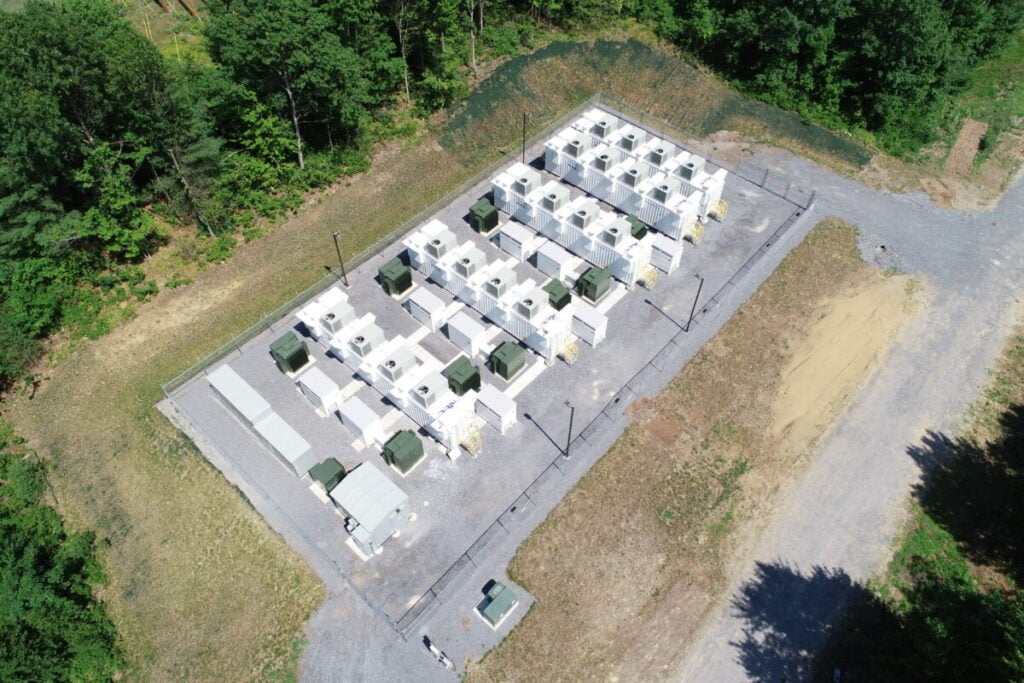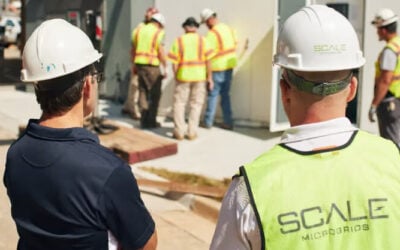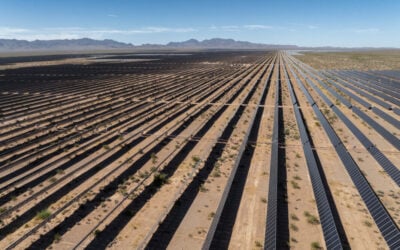
Long Island Power Authority (LIPA) in New York, US, has finalised contract negotiations for two large-scale battery energy storage system (BESS) projects proposed by Key Capture Energy.
Developer Key Capture Energy (KCE) announced the approval of the two projects by LIPA’s Board of Trustees yesterday (18 December).
Enjoy 12 months of exclusive analysis
- Regular insight and analysis of the industry’s biggest developments
- In-depth interviews with the industry’s leading figures
- Annual digital subscription to the PV Tech Power journal
- Discounts on Solar Media’s portfolio of events, in-person and virtual
The BESS assets will be built in Long Island’s Suffolk County, comprising the 50MW/200MWh Shoreham BESS in Hauppage and the 79MW/316MWh Kings BESS in Shoreham.
It follows the 2021 issue of a request for proposals (RFP) by electricity transmission and distribution (T&D) operator PSEG Long Island on behalf of LIPA, an agency of the New York government which owns the T&D systems on the densely populated island in the state’s southeast.
According to a presentation prepared this week for the board by LIPA staff, 78 proposals totalling more than 3,300MW of batteries were received. Five, totalling 329MW, were selected for contract negotiations and presented to the board in September 2022.
However, two of those five were terminated a year later, with developers citing that they could not hold firm to the pricing set out by their bids. Consequently, negotiations have only been concluded so far for KCE’s two projects, with progress details on the remaining project, also from KCE, yet to be announced.
Build-own-operate-transfer deals with Long Island Power Authority
PSEG LI and LIPA had sought up to 175MW of battery storage to connect to the Long Island grid via existing substations.
The RFP was ‘unique in two ways,’ according to the T&D system owner. First, developers would be able to lease land to develop their projects from LIPA, including land within the perimeter of its Shoreham Nuclear Power Plant—where KCE’s 50MW, 2.3-acre project will be built.
Secondly, unlike other RFPs, which LIPA said typically offer 20-year power purchase agreement (PPA) contracts for projects that developers would own and operate, LIPA intended to purchase and own the projects itself.
Developers had two options to pursue: either LIPA would buy the projects from the start of commercial operation through build-own-transfer (BOT) agreements, or LIPA would purchase the facilities after an initial seven years of developer ownership through a build-own-operate-transfer (BOOOT) agreement.
LIPA would purchase energy and ancillary services from the facilities over the initial seven years of operation under a PPA-type contract, and could then take ownership or extend the contract for a further 13 years.
The authority said that owning the assets would enable a lower cost of capital than typical developer-owned projects, reflecting LIPA’s strong credit rating and exemption from Federal Income Taxes.
Key Capture Energy opted for the seven-year BOOOT deal for its projects. Under its contract with LIPA, the developer bears the project development and operational risk, and the ‘pay-for-performance’ conditions mean KCE only gets paid if the projects successfully deliver capacity.
KCE must also guarantee round-trip efficiency (RTE) through the batteries’ charge-storage-discharge cycles and LIPA can cancel the contracts if performance is poor.
“Integrating storage in the electric grid, especially in areas with high energy demand, will allow clean energy to be available when and where it is most needed,” LIPA acting CEO John Rhodes said.
“These projects are critically valuable for our electric grid and will be valuable additions to our power supply portfolio,” Rhodes said.
The contracts now need to get their final approval from the Long Island Towns of Brookhaven and Islip, where Shoreham BESS and Kings BESS will be sited. The LIPA presentation noted that the town of Islip, where Kings BESS will be built, is among New York towns that have enacted a moratorium on energy storage development, currently prohibiting the project’s construction.
Busy year ahead for New York energy storage sector
While on paper, New York appears to already be a leading energy storage market in the US, with its statewide goal of deploying 6GW of energy storage by 2030 on the NYISO grid, the development of large-scale energy storage has been slow.
As explained by interviewees including Key Capture Energy’s former CEO Jeff Bishop in a 2023 article for our quarterly journal PV Tech Power (Vol.34), New York’s electricity market doesn’t experience the same volatility in electricity pricing as other markets, such as Texas’ ERCOT, which have fostered merchant battery storage opportunities to capture the difference between high and low power prices.
The state is looking to address the ‘missing money’ question for developers with the introduction of a series of solicitations for ‘bulk’ (utility-scale storage assets over 5MW output) through an Index Storage Credit.
Due for launch next year by the New York State Energy Research and Development Agency (NYSERDA), the Index Storage Credit is expected to lead to a minimum of three bulk energy storage procurements, to be held no less than annually, starting before the end of June 2025.






